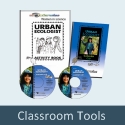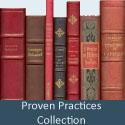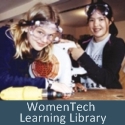STEM, Girls and the Importance of Storytelling
By Guest Blogger: Amy Leask, Vice President of Enable Education

- Amy Leask & Friends
For cultures like the ancient Greeks, arts and sciences weren’t polar opposites, but rather all part of the process of finding one’s way in the universe. Astronomers, chemists, biologists and inventors didn’t view their subjects with just the objective, analytical eye of a technician, but also with the sensibilities of a poet and a historian. They were interested in how things worked and how they could be manipulated, but they also prized the stories behind things, as well as how they affected the way people lived and thought.
A similar approach is being used by 21st Century educators to draw girls and young women into STEM. Traditionally speaking, girls and women have been encouraged to think in terms of communication, relationships between things, and general context. Instead of focusing on the “What” and “How” of STEM, female learners tend to be engaged more in these subjects if the discussion includes “Who”, “When” and “Why”. In other words, girls and women are being invited to tell the story of STEM, past, present and future. Storytelling is just one of the many ways in which STEM educators can include more “female” ways of learning.
Here are a number of ways in which storytelling can be incorporated into STEM subjects:
- Discoveries, advancements and innovations don’t just occur by themselves, but are the product of individual people. Famous minds in STEM, both past and present, often have rich and fascinating stories around them, such as how people became involved, what made them notable, and how they were able to overcome obstacles. Studying the stories of the individuals behind the theories and experiments gives a human context to STEM, which is something that female learners are conditioned to look for. This practice is also beneficial because it tells the story of the many women who have been instrumental in STEM for centuries.
- Along similar lines, learners are being encouraged to examine the sociological story surrounding STEM. As no discovery or development occurs in a vacuum, it’s crucial to understand that STEM is meant to serve human need, and that it ultimately impacts every aspect of how people within a culture live and think. This, again, plays into the traditionally “female” practice of learning by examining relationships.
- Aside from STEM history, educators are also teaching specific theories and even doing experiments with the help of storytelling techniques such as storyboards, role-playing, and even the creation of digital media. Imagine learning about the behaviour of a virus through verse, learning to code by role-playing, or writing an original song about how atoms behave.
- Science fiction has always been an exciting forum in which to anticipate the future of STEM. True, it has traditionally been seen as a male-dominated genre, but there are a large number of well-known female writers. If all else fails, there’s always room for the next budding female author.
The inclusion of storytelling is just one part of STEM education becoming STEAM (with arts) and more recently, STREAM (with reading and writing). Blending literacy and communication skills development into STEM benefits girls and women in that it validates skill sets that have traditionally been labelled as female, and brings a new perspective to these subject areas. Moreover, storytelling makes STEM more inclusive, appealing to younger children and to male learners who might otherwise not be as interested. Overall, learning to not just do STEM, but to talk about it, read about it and even be creative with it makes for well-rounded learners who are more ready to take on the challenges of STEM careers.
Amy Leask is VP of Enable Education and Founder of KidsThinkAboutIt.com. She is an educator and author who believes that learning is learning, and that a complete education includes a little of every subject area. Her professional interests include STEM/STEAM/STEAM education, 21st century learning, whole child education and educational technology.






Recent Comments